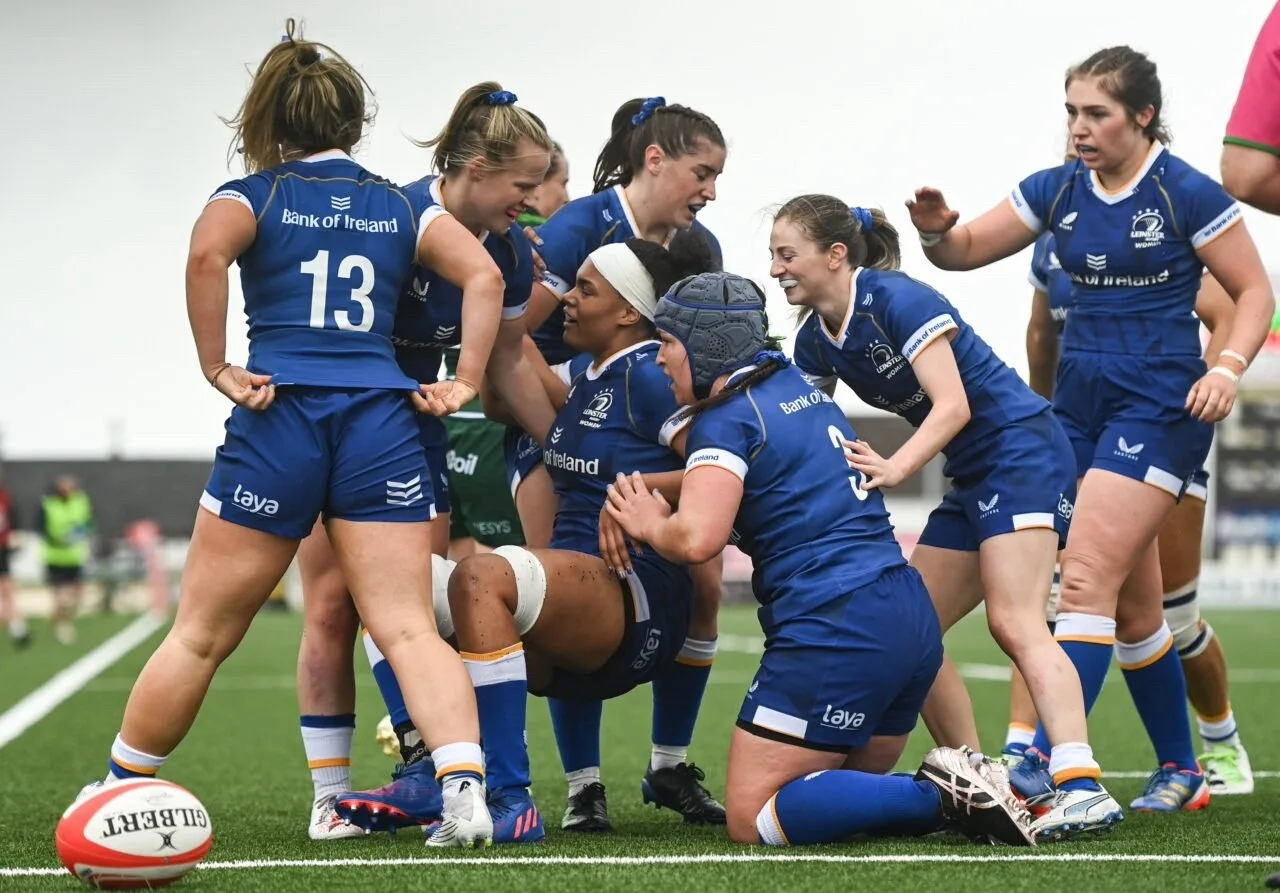In the world of oval-shaped balls and bone-crushing tackles, rugby stands tall as a beloved sport with an ardent following. Yet, for many newcomers, the distinction between rugby union and rugby league can seem perplexing. While the two sports share a common ancestry, they have evolved into distinct games with their own rules, strategies, and cultures. In this comprehensive exploration, we will delve deep into the heart of rugby, dissecting the nuances that set rugby union and rugby league apart, and highlighting their unique attributes.
A Brief History of Rugby
Before we dive into the differences, let’s rewind to the birth of rugby itself. The story begins in the early 19th century in the town of Rugby, England. It was here that a young William Webb Ellis, according to legend, disregarded the rules of football and picked up the ball, running with it in his hands. This impulsive act gave birth to the game of rugby, which over time, branched into two distinct codes: rugby union and rugby league.
Rugby Union: The Classic Code
Rugby Union – The Classic Code
Rugby union, often referred to simply as “union,” is the older of the two codes, and it is steeped in tradition. This version of the game has maintained a more conservative approach to rule changes and has a broad global presence.
Team Composition and Gameplay
In rugby union, each team fields 15 players, divided into eight forwards and seven backs. The forwards are the engine room of the team, responsible for scrummaging, lineouts, and rucking. The backs are the speedsters and playmakers, tasked with scoring tries and converting them into points.
The gameplay in rugby union is characterized by continuous phases of play. Once a player is tackled, a ruck forms, and players from both teams compete for possession of the ball. This cycle repeats until one team scores a try by grounding the ball over the opponent’s try line or by kicking it through the posts for a penalty or conversion. The game can be a grueling battle of attrition, with matches lasting 80 minutes.
Set Pieces and Scrums
One of the distinctive features of rugby union is the set piece, particularly the scrum and lineout. Scrums involve the eight forwards from each team engaging in a tightly packed formation to contest for the ball. Lineouts occur when the ball goes out of bounds, and players from both teams compete to catch the ball thrown back into play.
Rugby League: The Faster Pace
Rugby League – The Faster Pace
Rugby league, often simply referred to as “league,” emerged in the late 19th century as a breakaway from rugby union. This code sought a faster, more spectator-friendly game.
Team Composition and Gameplay
In rugby league, each team has 13 players, comprising six forwards and seven backs. The reduced number of players on the field leads to a faster-paced and more open style of play.
The gameplay in rugby league focuses on structured sets of tackles. After six tackles, the attacking team must surrender possession to the opposition, which leads to frequent kicking and passing to maximize their territory and field position.
No Scrum, No Lineout
A significant departure from rugby union is the absence of scrums and lineouts in rugby league. Instead, when the ball goes out of bounds, a play-the-ball restart is used, providing a smoother and quicker method of resuming play.
Key Rule Differences
Now that we have a basic understanding of the two codes, let’s delve into the specific rule differences that distinguish rugby union from rugby league. These differences play a pivotal role in shaping the gameplay and strategies of each code.
Tackle and Ruck
In rugby union, after a player is tackled, a ruck forms, with players from both teams contesting for the ball on the ground. This rucking phase is a fundamental part of the game and allows for prolonged ball retention and territorial battles.
In contrast, rugby league uses a “play-the-ball” system after a tackle. The tackled player rolls the ball backward with their foot, and a teammate plays it, ensuring quick and continuous play. This difference results in a faster tempo in rugby league, with fewer stoppages.
Number of Tackles and Possession
Rugby union allows for an unlimited number of tackles until a team either scores or commits an infringement. This means that a team can retain possession for extended periods, leading to long phases of play.
Conversely, rugby league imposes a strict limit of six tackles per set of possession. After the sixth tackle, the possession is handed over to the opposing team. This rule keeps the game fast-paced, with teams strategizing to maximize their tackles and territory.
Kicking Strategy
Kicking is a crucial aspect of both rugby codes, but their usage and strategies differ significantly. In rugby union, teams use kicks to gain territory, contest high balls, and tactically position themselves on the field. Kicking for goal through penalty kicks and conversions also plays a significant role in scoring.
Rugby league places more emphasis on tactical kicking during open play. Teams frequently kick to gain territory, force opposition errors, or set up attacking opportunities. Scoring in rugby league primarily occurs through tries and conversions, with penalty goals being less common.
Point Values
While both codes reward tries (touchdowns) with five points, the point values for other scoring actions differ:
- Rugby union awards three points for a penalty goal, two points for a conversion, and three points for a drop goal (field goal).
- Rugby league offers two points for a penalty goal and one point for a drop goal. Conversions after tries are worth two points.
Offsides and Defensive Line
The rules regarding offsides and the defensive line also diverge between the two codes. In rugby union, players must remain behind the hindmost foot of their teammates in open play, which can lead to a more staggered defensive line.
Rugby league employs a more straightforward approach, with players required to retreat ten meters from the play-the-ball. This ensures a consistent and flat defensive line, contributing to the faster pace of the game.
Cultural and Organizational Differences
Beyond the rule variations, rugby union and rugby league have developed distinct cultural identities and organizational structures.
International vs. Club Dominance
Rugby union has a strong international focus, with prestigious tournaments like the Rugby World Cup showcasing the pinnacle of the sport. National teams, such as the All Blacks (New Zealand) and England, hold immense prestige, and international matches draw a global audience.
In rugby league, club rugby takes precedence. The National Rugby League (NRL) in Australia and the Super League in the United Kingdom are the premier club competitions, and many fans are fiercely loyal to their local teams. International rugby league is growing but has yet to reach the same level of prominence as rugby union.
Amateur vs. Professional Backgrounds
Rugby union has a more extensive history as an amateur sport, which persisted until the late 20th century. The transition to professionalism in the 1990s brought about significant changes in player contracts, salaries, and the overall structure of the game. Despite this shift, the sport’s amateur roots continue to influence its culture.
Rugby league, on the other hand, embraced professionalism earlier, in the early 20th century. This transition led to a more business-like approach to the sport, with structured leagues, standardized contracts, and a greater emphasis on commercialization.
Notable Variations Around the World
While rugby union and rugby league are the two primary codes, there are variations and spin-offs found in different parts of the world. Let’s take a closer look at some of these unique versions.
Rugby Sevens
Rugby Sevens – The Fast and Furious Variant
Rugby Sevens is a shorter and faster-paced version of rugby union. It features seven players per team and shorter match durations, making it a thrilling spectacle for fans. Rugby Sevens has gained international recognition and has been included in the Olympic Games since 2016. The rules are similar to rugby union, but the reduced number of players on the field and the faster pace of play set it apart.
Rugby Union in America
In the United States, rugby union has been steadily growing in popularity, thanks in part to the establishment of Major League Rugby (MLR). MLR is a professional rugby union league that features teams from across the country. While American football remains the dominant oval ball sport, rugby union is making strides and attracting new fans.
Rugby League in France
France has a strong tradition of rugby league, especially in the southern regions. The French Rugby League Championship has a devoted following, with teams like Catalans Dragons competing in the Super League against English clubs. Rugby league in France showcases the sport’s international appeal beyond its Anglo-centric roots.
Conclusion
Rugby union and rugby league may share a common origin, but they have evolved into distinct sports with unique rules, gameplay, and cultural significance. Whether you prefer the structured battles of rugby union’s scrums and rucks or the fast-paced action of rugby league’s play-the-ball system, both codes offer an exhilarating and physically demanding experience for players and fans alike.
As you immerse yourself in the world of rugby, whether as a player or a spectator, remember that the beauty of the sport lies in its diversity. Rugby union and rugby league represent two sides of the same coin, showcasing the adaptability and resilience of this remarkable game.
So, the next time you find yourself watching a match, you’ll have a deeper understanding of the differences that make rugby union and rugby league two distinct and captivating codes, each with its own unique charm and allure. Enjoy the game, and may the best team win!
Disclaimer: The information provided in this article is accurate as of the knowledge cutoff date in January 2022. Rules and developments in rugby may have evolved since that time.
References:
Note: This article provides an in-depth exploration of the differences between rugby union and rugby league. For the latest updates, news, and live coverage of matches, please visit the official websites of relevant rugby governing bodies and leagues.

